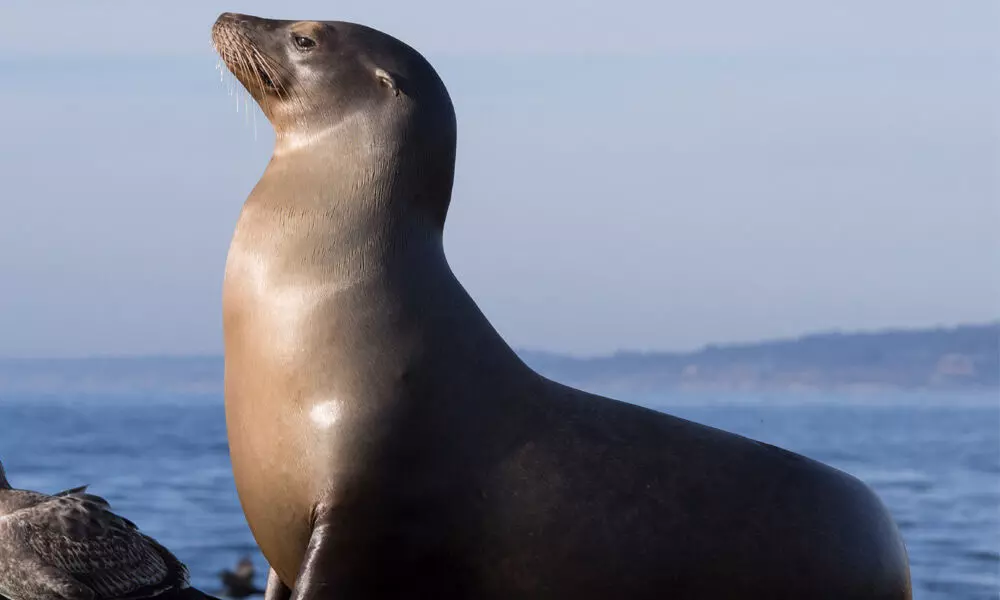Sea Lions Allow Them To Interact With The World Around Them

Sea Lions Allow Them To Interact With The World Around Them
- They perceive softness by squeezing or pushing items, and we judge size and shape by feeling around the edges of objects.
- The active touch sensing because we have a great level of control over our sensory perception.
Humans have incredible fingertip dexterity. They're sensitive, and they can glide their hands over items to feel their softness, texture, size, and shape. These are both intricate and "task-specific" motions. This means that depending on how you want to feel about an object, you use different movements. They perceive softness by squeezing or pushing items, and we judge size and shape by feeling around the edges of objects. And if you wanted to feel an object's texture, you would sweep your fingertips over it.
The ability to use various movement strategies demonstrates that we can accurately control our fingertip movements and draw on our previous experiences to pay attention to crucial parts of an item, such as the edges of forms and the surfaces of textures.
The active touch sensing because we have a great level of control over our sensory perception.The edges of shapes and the surfaces of textures, for example, are crucial characteristics of an object.
Most mammals lack the flexibility and sensitivity of human fingertips. Instead, they have whiskers on their faces, which are touch-sensitive hairs used to guide locomotion, foraging for food, and exploring objects.
For decades, neuroscientists have studied whiskers, particularly in laboratory rats and mice, in order to better understand how signals from the whiskers are processed in the brain. But it's only recently that we've realised that, like our fingers, whiskers are moved using wonderful methods.Rats, mice, and other mammals may "whisk," or move their whiskers back and forth in a scanning manner. Whisking is one of the fastest actions animals can perform, with mice whisking up to 25 times per second.
When rats and mice come into contact with an object, they change their whisker movements. Bunching up their whiskers to make more of them touch a surface, making light touches to permit better signals against a surface, and slowing down whisker movements to have them contact the surface for longer are all examples of these techniques.
However, no one understood if animals could tailor their whisker movements to specific activities.
Such "task-specific" movements would be a fascinating discovery, implying a high level of control over their sensors and perception.Choosing a species to be a candidate
The first step in answering this crucial question was to choose a plausible candidate species for further research.
Pinnipeds, such as seals, sea lions, and walruses, have whiskers that are thicker and longer than those of smaller animals like mice, making them easier to measure.
They also have some of the most sensitive whiskers of any mammal, detecting textures and shapes with the same sensitivity as human fingertips, even in freezing water, where our fingers would become numb.They can also be moved. When compared to harbour seals and Pacific walruses, we previously discovered that California sea lions perform the greatest and most regulated movements with their whiskers.
California sea lions were the ideal subject for our study of task-specific whisker movements because of these qualities, as well as their ability to conduct object-discrimination tasks, in which they could distinguish between items based on size and shape.
For the whole suite of experiments, we used a sea lion named Lo. In marine mammal research, having only one individual is usual, but it puts additional strain on the investigators to acquire high-quality, quantitative data from that single individual.Lo was taught to use only her whiskers to complete a texture discrimination task.
Among the other distractor fish, she needed to find a medium-textured, fish-shaped object. She also completed a visual test of finding a grey fish among other coloured distractors and a size-discrimination task of finding a medium-sized fish among other distractors (sea lions use very small whisker movements in visual tasks).
It was evident from the data and camera recordings that Lo used her whiskers for task-specific motions. She swept her hands across textured surfaces and felt around the edges of various-sized shapes. Humans use these specialised movement strategies with our fingertips as well.Lo was able to complete the tasks quickly thanks to her capacity to switch whisker exploration tactics across tactile tasks. In almost every trial, Lo identified the proper fish and made decisions in less than half a second. Other sea lions were seen using similar methods in video footage, thus we believe this is a regular occurrence among California sea lions in general.
The fact that the same movement methods are retained from sea lion whisker movements to human fingertip motions demonstrates the importance of these tactics for strengthening touch signals across tasks.
Since Pinnipeds have sensitive, moveable whiskers, it's likely that they'll be able to produce task-specific whisker movements as well. We're looking into it right now, along with other carnivorous species like otters.This is the first study to show that task-specific whisker touch sensing exists. It highlights how examining whiskers can provide valuable insights into animal movement control, perception, and cognition.

















